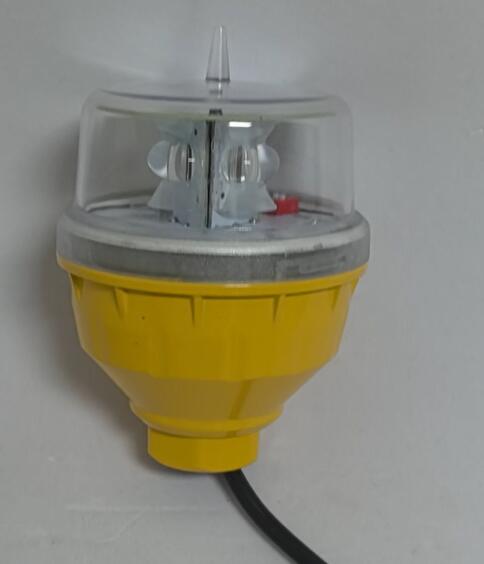LED Aviation Obstruction Light: The Future of Airspace Safety
In modern aviation safety, LED aviation obstruction lights have become the gold standard for marking tall structures. These advanced lighting systems offer superior visibility, energy efficiency, and reliability compared to traditional lighting technologies. As air traffic increases and environmental regulations tighten, the shift toward LED aviation obstruction lights is accelerating. This article explores their benefits, applications, and technological advancements that make them indispensable for aviation safety.
Why LED Technology is Revolutionizing Obstruction Lighting
1. Unmatched Energy Efficiency
LED aviation obstruction lights consume up to 80% less power than incandescent or halogen alternatives.
Lower energy requirements make them ideal for solar-powered installations in remote locations.

Reduced electricity costs provide long-term savings despite potentially higher initial investments.
2. Extended Lifespan and Reduced Maintenance
With operational lives exceeding 50,000 hours, LED systems dramatically decrease replacement frequency.
Fewer maintenance interventions mean lower labor costs and minimized downtime for critical infrastructure.
The solid-state design of LEDs eliminates fragile filaments, making them more resistant to vibration and shock.
| led aviation obstruction light |
3. Superior Visibility and Performance
LED aviation obstruction lights provide brighter, more consistent illumination with precise light distribution.
Instant-on capability ensures immediate visibility without warm-up periods.
Advanced optics allow for customized beam patterns to meet specific aviation requirements.
Key Applications of LED Aviation Obstruction Lights
1. Telecommunication Towers
Tall communication masts require reliable, all-weather lighting solutions.
| led aviation obstruction lights |
LED aviation obstruction lights ensure continuous operation with minimal maintenance in remote locations.
2. Wind Energy Installations
Wind turbines' height and movement demand durable lighting systems.
LEDs withstand constant vibration while maintaining optimal visibility for low-flying aircraft.
3. Urban High-Rise Buildings
Skyscrapers in densely populated areas must comply with strict aviation lighting regulations.
LED aviation obstruction lights blend safety with aesthetic considerations in city landscapes.
4. Power Transmission Infrastructure
High-voltage power lines and transmission towers need highly visible markers.
LED systems provide clear day/night visibility across vast electrical networks.
Technological Advancements in LED Aviation Lighting
1. Smart Monitoring Systems
Integration with IoT allows real-time performance tracking and predictive maintenance.
Remote diagnostics enable immediate fault detection and resolution.
2. Adaptive Lighting Technology
Automatic brightness adjustment based on ambient light conditions.
Weather-responsive systems that intensify output during fog or low visibility.
3. Sustainable Power Solutions
Solar-powered LED aviation obstruction lights for off-grid applications.
Hybrid systems combining grid power with renewable energy sources.
Regulatory Compliance and Standards
Modern LED aviation obstruction lights must meet stringent requirements from:
FAA (Federal Aviation Administration)
ICAO (International Civil Aviation Organization)
EASA (European Union Aviation Safety Agency)
Compliance ensures proper visibility ranges, flash patterns, and durability standards for different structure heights and locations.
The Future of LED Obstruction Lighting
Emerging trends include:
AI-powered predictive maintenance
Advanced anti-collision systems integrating with aircraft navigation
More compact and efficient LED designs
The transition to LED aviation obstruction lights represents a significant leap forward in aviation safety technology. Their energy efficiency, longevity, and superior performance make them the obvious choice for marking tall structures in an increasingly crowded airspace. As technology continues to evolve, these systems will become even more intelligent, sustainable, and integrated with broader aviation safety networks.
For industries requiring obstruction lighting, investing in high-quality LED aviation obstruction lights ensures regulatory compliance, operational efficiency, and most importantly - enhanced safety for aircraft and ground structures alike. The future of airspace visibility is undoubtedly LED, combining cutting-edge technology with uncompromising reliability.
